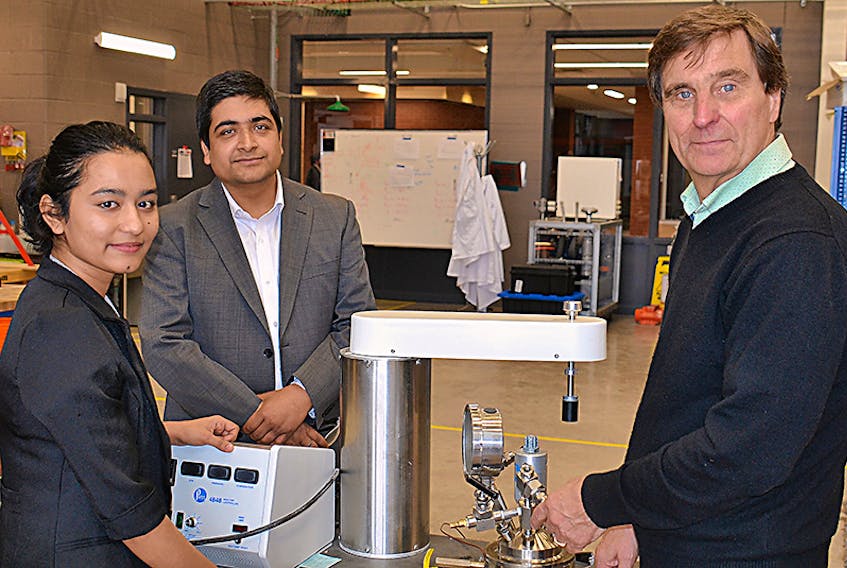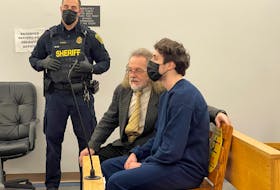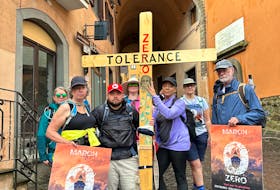Years of run-off caused by farming practices and golf course maintenance have caused sea lettuce to explode in Island waterways, and one Island-based team is looking to make use of the pesky plant.
Mike Cassidy, owner of Transcon International Ltd., a company with a history of battling sea lettuce, first tried to tackle the problem in 2011.
At that time, Cassidy purchased a stainless steel harvester, which resembled a grain combine, to remove the invasive plant from tributaries he said were “laden with sea lettuce”.
Sea lettuce is a type of algae that thrives in areas with an excess of nutrients, like fertilizer nitrates, found in farm runoff. As the sea lettuce dies off and decomposes, it robs the water of oxygen, creating unlivable anoxic conditions that can lead to plant and fish kills.
The decomposition also poses another sort of problem, Cassidy said.
“Not only do we have to worry about plant life and fish life, but we have to look at it from a tourism perspective – the smell,” Cassidy said, adding the odour is that of rotten eggs.
While the harvester was successful at collecting the sea lettuce, he soon faced another problem – what to do with the collected product.
Cassidy knew he had to find a value-added component to the harvested sea lettuce and see if there was anything it could be used for. So, he enlisted the expertise of Bishnu Acharya, an assistant professor at the UPEI School of Sustainable Design Engineering, and international graduate student Ankita Shrestha to perform the research.
Sea lettuce is a plant which is about 90 per cent water, so in order to recover the energy from the plant, it has to be dried.
Because drying is an energy-intensive process, Acharya and Shrestha came up with a more efficient and cost-effective process, called hydrothermal processing, which uses reduced heat and mild pressure.
During that process, any carbon in the sea lettuce is turned into char – a carbon-rich solid – that can be used for energy and soil application, Acharya said, adding that because Island soil tends to be “very low” in organic matter, organic matter needs to be added.
“That hydrochar could be that sustainable material that can go into the soil to enhance the organic matter.”
Along with the hydrochar, the process divides the sea lettuce into a biogas, which can be used in energy application, and a nutrient-rich liquid that can be used for agricultural application.
“We are kind of recycling the nutrients back into the land,” Acharya said. “At the same time in the process we are producing some value-added product, and then maybe the biogas that is produced can go back into the process to provide the energy that is needed for the whole process.”
To make research investments go further, the team members approached Synapse Inc., which turns UPEI ideas into solutions, which helped them prepare a successful proposal for a Mitacs Accelerate research internship.
The eight-month project, which began last month and is valued at $30,000, is funded by matching contributions from Mitacs and Cassidy’s Transcon International Ltd., with UPEI providing in-kind expertise and facilities for the collaboration.









